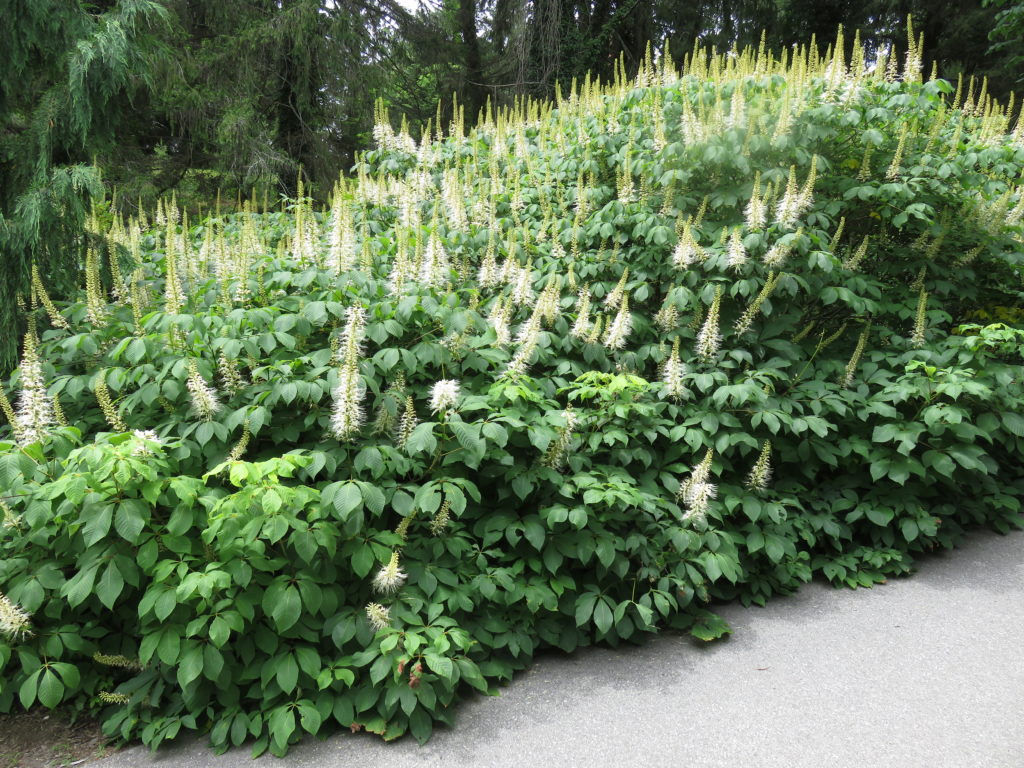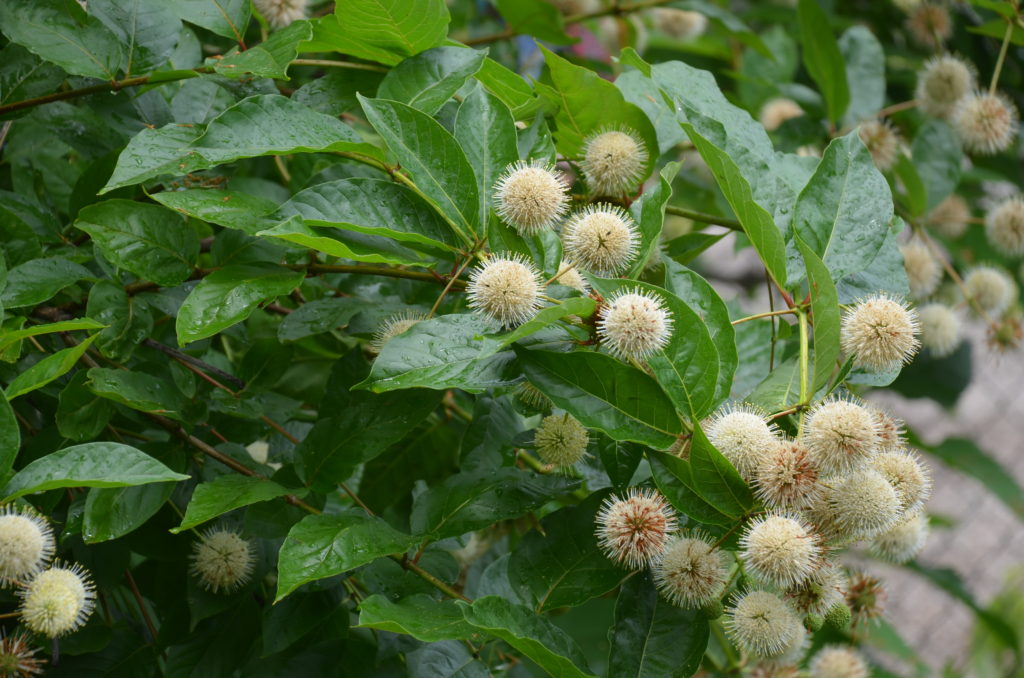
Bottlebrush buckeye (Aesculus parviflora) is one of our finest early summer native flowering shrubs for sun or shady sites. It is a dense, mounded, suckering, deciduous, multi-stemmed shrub which grows 6-12 feet tall and 15-18 feet spread. It flaunts unique palmate green leaves (5-7 leaflets) and white 10-12 inch tall floral candles. The dynamic bottlebrush florets reveal conspicuous red anthers and pinkish filaments. Glossy inedible, pear-shaped husks containing nuts (buckeyes) appear in early fall. Finally, the foliage turns yellow in autumn. (Zones 4-8)
Summersweet (Clethra alnifolia) is a deciduous native shrub found in the wild in moist woodlands, stream banks and seashores from coastal Maine to Florida and west to Texas (Zones 3-9). This rounded, suckering, densely-branched, deciduous shrub grows to 3-6 feet (less frequently to 8 feet) tall and is noted for producing a mid-summer bloom show of sweetly fragrant white (or pink), 2-6 inches long, upright flower panicles (racemes). Flowers give way to dark brown seed capsules which often persist into winter. Serrate, obovate to oblong, glossy, dark green 3-4 inch long leaves. Expect an attractive yellow to golden brown fall leaf color. Flowers attract to butterflies and bees.
Buttonbush (Cephalanthus occidentalis) is a deciduous native shrub with an open-rounded shrubby form that typically grows 6-12 feet tall (occasionally to 20 feet). Tiny, tubular, 5-lobed, fragrant white flowers appear in dense, spherical, long-stalked flower heads (to 1.5 inches in diameter) in early summer. Long, projecting styles give the flower heads a distinctively pincushion-like appearance. Flower heads attractive bees and butterflies. Flower heads mature into hard spherical ball-like fruits consisting of multiple tiny two-seeded nutlets persist through most winters. Ovate to elliptic glossy bright green 4-6 inches long leaves form in pairs or whorls in late spring (May). (Zones 5-9)
Chastetree (Vitex agnus-castus) is typically grown in warm winter climates as a vase-shaped, deciduous shrub to 10-15 feet tall or trained as a single trunk tree to 20 feet tall. This non-native will grow as a 3-5 feet tall herbaceous perennial in colder parts of the U.S. (zones 5). Its grayish-green aromatic, palmately compound leaves are comprise of 5-7 lance-shaped leaflets (each leaflet to 6 inches long). In early- to mid- summer 9-12 inch floral panicles of tiny, fragrant, lavender to pale violet flowers attract loads of nectar hungry butterflies and pollinators. (Zones 6-9)


 Posted in
Posted in 
